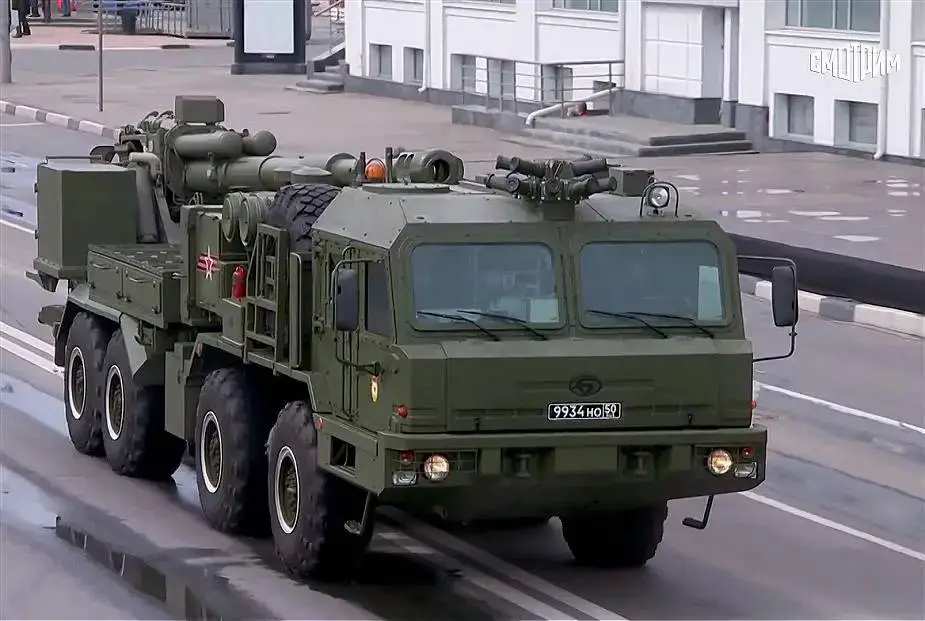On May 17, 2023, the General Director of The Russian Defense Company Uralvagonzavod (UVZ), Alexander Potapov, announced the completion of state trials for the 152mm self-propelled artillery gun, the 2S43 "Malva". This is indeed great news, especially given that the Russian Army had previously been devoid of such wheeled self-propelled artillery units (SPAs), which are crucial for numerous tactical situations.
Follow Army Recognition on Google News at this link

Russian 2S43 Malva 8x8 152mm wheeled self-propelled howitzer. (Picture source Russian social network VK)
The production and operation of such a vehicle demand far fewer resources and effort compared to the traditional tracked self-propelled howitzers. The introduction of relatively affordable wheeled SPAs, fitted with a modern fire control system, is expected to reduce the use of outdated towed howitzers within the troops.
Towed howitzers are not only less effective but also much less resilient when exposed to counter-battery fire. The advent of the 2S43 "Malva" represents a significant stride towards modernizing the artillery component of the Russian Army, with an emphasis on mobility, cost-effectiveness, and survivability on the battlefield. This development is likely to have profound implications for the future of artillery warfare.
The 2S43 "Malva" is a Russian 152mm inter-service artillery system, based on the chassis of the all-wheel-drive BAZ-6610-027 "Voschina" vehicle produced by the Bryansk Auto Plant. This self-propelled howitzer is part of the research and development project known as "Nabrosok". The military gun used in this vehicle is the 152mm rifled gun 2A64, featuring a 47-caliber-long barrel, identical to the gun of the 2S19 "Msta-S" self-propelled howitzer. The significant reduction in weight was achieved by abandoning the turret and armor at the installation site of the gun, allowing the "Malva" to be transported by military transport aircraft like the Il-76.
The 2S43 "Malva" was designed at the "Burevestnik" Central Scientific Research Institute in Nizhny Novgorod. Its primary mission includes the defeat of the enemy's tactical nuclear and conventional weapons, delivering strikes against artillery batteries, columns of equipment, air defense means, command posts, and so forth.
A key innovation of the 2S43 "Malva" project is the use of a wheeled chassis, which, with the same armament and combat capabilities, makes the 2S43 significantly lighter and more mobile than the 2S19 "Msta-S" self-propelled howitzer. This also makes it cheaper to operate.
The first mention of the creation of the 2S43 "Malva" dates back to 2019. In 2021, the effectiveness of the "Malva" was confirmed as part of the chief designer's trials, meeting the requirements of the tactical and technical assignment. Trials of the 2S43 "Malva" continued until the end of 2022, with experimental production of the product also being launched. On May 17, 2023, the trials were concluded.
The technical characteristics of the "Malva" are quite impressive. It has a firing range of 24.5 km, and a rate of fire of up to 7 rounds per minute. Operated by a crew of 5, it can carry a total of 30 rounds. The dimensions of the vehicle are 13 meters long, 2.75 meters wide, and 3.1 meters high, with a total weight of 32 tons. The 2S43 "Malva" marks a significant advancement in the capabilities of Russian artillery systems, offering improved mobility, lighter weight, and cost-effective operation.
Defense News May 2023















